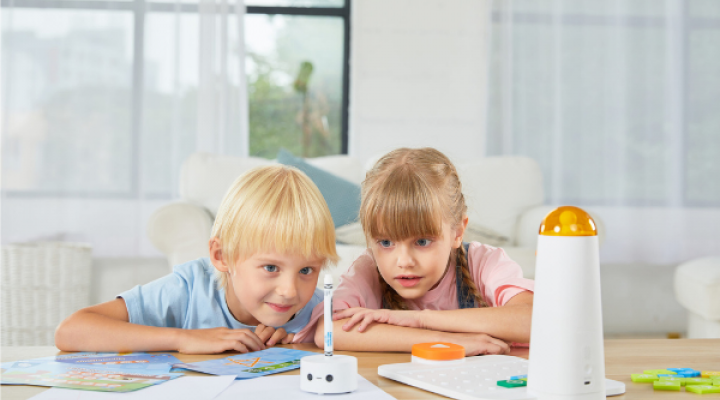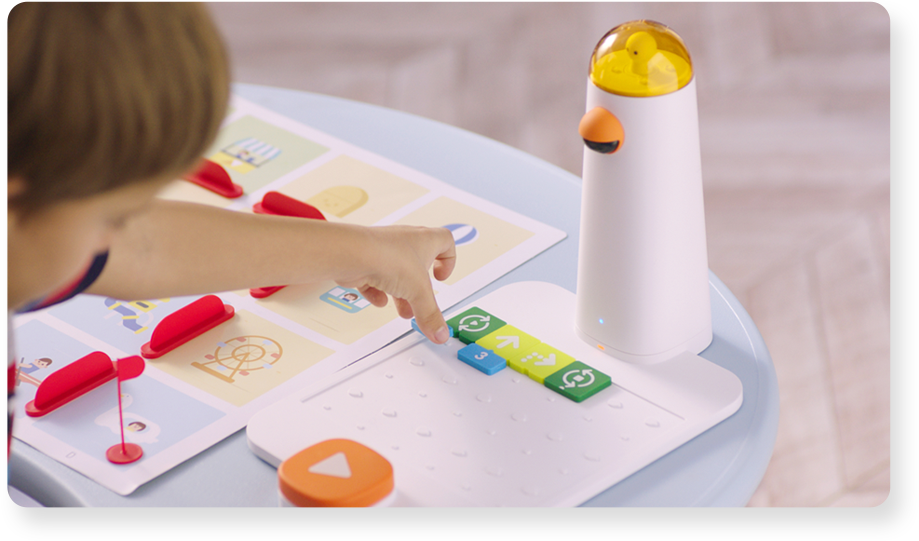
2023-09-26
Has your child asked for a coding robot? Maybe you think it’s just a toy, but these fun robots do more than just move around and make noise. They actually teach kids the fundamentals of programming, increase their creativity and improve their problem solving skills. If you’re still on the fence, think about all the benefits for your child and even you. And yes, you might just fall in love with a robot that teaches you to code too.
The Rise Of STEAM For Kids
STEAM is a term used to encompass the skills that more and more fields require. It refers to science, technology, engineering, arts and math. Learning these skills helps set kids on a path to a more successful and fulfilling career. With so many industries requiring STEAM skills, getting them started early is important. The good news is a coding robot for kids is a great way to get them interested in STEAM. Not only are parents embracing them, but schools are using them too.
The Popularity Of Coding Robot Toys
While kids have been able to program robots for decades, today, companies are focused more on creating robot coding toys that prepare kids for their future jobs. However, learning with a screen and a textbook isn’t always engaging enough to keep kids interested. Robots give them a hands-on aspect, which has led to a sudden surge in popularity of the coding robot toy. It’s a toy, but it’s also highly educational. It’s a win for both parents and kids. Plus, kids like educational toys, especially when they don’t even realize how much they’re learning.
Coding Robot Benefits For Kids
Kids of all ages benefit from learning to code as early as possible. The good news is there are a variety of robots to teach coding in different ways. From strictly hands-on to a mix of computer and robot, there’s something for everyone. All of them, though, offer all of the benefits below and more:
1. Makes Coding Hands-On
Many coding classes involve a kid sitting at a computer typing in code. They press compile and see yet another screen. They don’t really get their hands on anything. This can get boring quickly, especially if a kid is new to coding. A coding robot toy is hands-on. While some let them program actions on a screen, they get to see a physical object respond to their commands. It’s exciting and engaging.
2. Robot Coding Teaches Engineering
Depending on the robot or kit, kids also get to build things. For instance, robots for younger kids often involve putting blocks together. Older kids might put the entire robot together or add/remove pieces to make the robot do different things.
3. Encourage Interest In STEAM
If you could read instructions or play with a robot, which would get you more interested in STEAM? Even as an adult, you’d prefer to play with the robot. A robot coding game shows that STEAM is far from boring. Learning these skills can be as fun, if not more so, than playing a video game, but in a more hands-on way.
4. Introduce Coding Without Overwhelming
For anyone who has ever tried to jump into coding, it can be overwhelming. Trying to focus on all the technical aspects, such as when to use a comma or a semi-colon, might make kids give up before they get very far. Instead of making learning to code technical, a coding robot helps them learn at their own pace. They learn the fundamentals before they dive into more technical aspects, ensuring they’re already interested enough to keep learning.
5. Increases Creativity
A common misconception is technology hurts creativity, but it actually boosts it. Imagine your child using their imagination to come up with new things for their robot to do. They’re not just playing around with a toy, but creating how the toy acts.
6. Coding Robot Brings Kids And Parents Together
It’s hard to come together sometimes. Using a robot to learn to code isn’t just for kids. Parents should get in on the fun too. Help your child learn how to do things. Play around with it to see what you can do. You can even create challenges and work on them together. It’s a great way to grow closer and have a common interest.
7. Makes Kids Persistent
A coding robot toy helps make kids more persistent. They will make mistakes. However, their eagerness to get their robot to perform as they want keeps them going. They have a fun end goal to accomplish. Instead of giving up, they keep trying. When they do succeed, they’ll feel so proud of themselves that they’ll work even harder on the next challenge.
8. Teaches Problem Solving
Coding isn’t just typing lines of text. You use code to solve a problem. For instance, how do you make a robot walk? You have to figure out how to put the code together in the correct sequence to make the robot walk. Kids won’t realize it, but they’re learning how to problem solve while playing.
9. Make New Friends
A robot coding game is a great opportunity to teach kids skills that help them make new friends. Robotics competitions and groups let parents and their kids come together to enjoy coding and robots. They’ll find people who like the same things they do. Not only does this keep them interested in STEAM topics, but helps them build more confidence.
Matatalab’s Coding Robot For Kids
Matatalab Lite is Matatalab’s coding robot designed for kids ages three and up. This means it’ll grow with your child, keeping them interested in STEAM for years to come.
Metatalab Lite Overview
Matatalab Lite might seem like a simple robot until you start playing with it. Since it’s made for multiple ages, it’s easy to use and offers multiple modes to continue engaging kids. It’s designed specifically to meet the learning needs of kids as they grow.
Matatalab Lite Features
With three different modes, kids have quite a lot to play with. Control Mode lets kids push buttons on the controller portion of our coding robot toy to control the robot’s movements. Coding Mode takes things a step further. In this mode, kids press the controller buttons in a sequence. When they push Play, the robot performs those actions.
Sensor Mode adds even more fun by turning on the robot’s sensors. Kids can create obstacles, use lights and even set colors to control how the robot moves.
The Matatalab Lite comes with a booklet filled with ideas to help kids get started. For instance, the booklet shows you how to attach a marker to draw shapes as the robot moves. It also suggests fun games, such as bowling. Of course, kids can do much more. All they have to do is use their imaginations and new found coding skills to make it happen.
Matatalab wants learning to be fun and hands-on. Just because a kid is younger doesn’t mean they can’t start getting interested in STEAM topics. Use our cute Matatalab Lite robot to help your little one embrace their curiosity and start learning skills they’ll use in school, hobbies and future jobs.

 日本語
日本語


